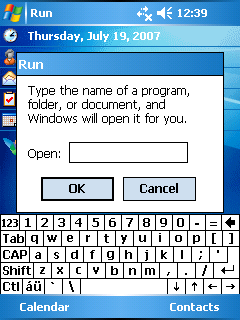First thing you should do is always get rid of your temporary files and any unused programs. Once you have done that then run the defrag tool to reorganize your hard drive . Defragmenting your files puts them back into one contiguous space on your drive optimizing your boot time.
. Defragmenting your files puts them back into one contiguous space on your drive optimizing your boot time.
To get Vista's defrag tool to give you some information about your hard disk, and to control which hard disk or partition it defragments, you will need to use the command line defragmentation utility. It will still not give you any feedback while defragmenting, just as the GUI version of the defragmenter will not, but at least you can get information on the fragmentation level of your hard disk, control whether to defragment even if the file fragments are larger than 64 MB, and control which partition or hard disk to defragment.
To use the command line defrag tool in Windows Vista, you have to run the Command Prompt as an administrator. In Vista, this is not automatic even if you are logged in as the administrator. Click the Windows button (previously the Start button in earlier versions of Windows), the All Programs menu item and the Accessories menu item. Right click the "Command Prompt" button and select "Run as administrator". A command prompt window will appear. Everything you run in this Window will be run with administrator rights.
To view a file fragmentation analysis of (say) your C: drive, type:
defrag c: -a -v
The "-a" parameter tells the defragger to perform a fragmentation analysis. The "-v" option tells it to be verbose in its report. If you want a report on drive D: or some other drive, substitute that drive letter in place of c:.
To defragment a particular drive, say C:, type:
-
defrag c: -v -r
The "-r" option tells the defragmentation utility to treat files that are fragmented with 64 MB fragments or larger as though they are not fragmented. This partial defragmentation is the default for "defrag", and it's the only way the GUI defragmenter in Vista works.
You can also force the defragmenter to defragment everything. That is, even if the file fragments are larger than 64MB, the Vista defragmenter will still attempt to put the file into contiguous sectors. To do this, run the defragger with the following options:
2. defrag c: -v -w
As you have probably have guessed, "-w" tells the Vista defrag tool to do a full defragmentation. All file fragments will be consolidated where possible.
You will still not get any feedback as to the progress of the defragmentation with the command line tool, just as you did not with the GUI version. However, at the beginning and the end of the defragmentation, "defrag" with the "-v" option will give a report, much like the old Windows XP GUI defragmentation utility. Again, though, it will not report fragmented files with 64 MB fragments (or larger) as being fragmented.
Please NOTE: With the command line method there is no progress bar so you just have to sit and wait for it to finish.
If defragging doesn’t really help your boot performance then you should at least see improvement in your application load times when the operating system is finally booted up.
Also there is one quick edit to the registry that can make Vista shut down quicker than you can say “shut down.” Those not comfortable with delving in to the registry had better not proceed because making a mistake here could (and usually does) mess up your system bad.
At the Start Menu, type “regedit” without the quotes in the search box and hit Enter. Find HKEY_LOCAL_MACHINE/SYSTEM/CurrentControlSet/Control and go to the Control folder, right click the entry “WaitToKillServiceTimeout” and set the value to something lower, 1000 is usually good (the numbers represent milliseconds). The default value is a (too) generous 20000. However, the cost with this is that it won’t give running programs much time to save data so losing work using the tweak is a definite possibility.
 Windows Mobile has had a run dialog similiar to the one found in desktop versions of Windows since Windows 95 for as long as I can remember. This feature is not well known however.
Windows Mobile has had a run dialog similiar to the one found in desktop versions of Windows since Windows 95 for as long as I can remember. This feature is not well known however. 


